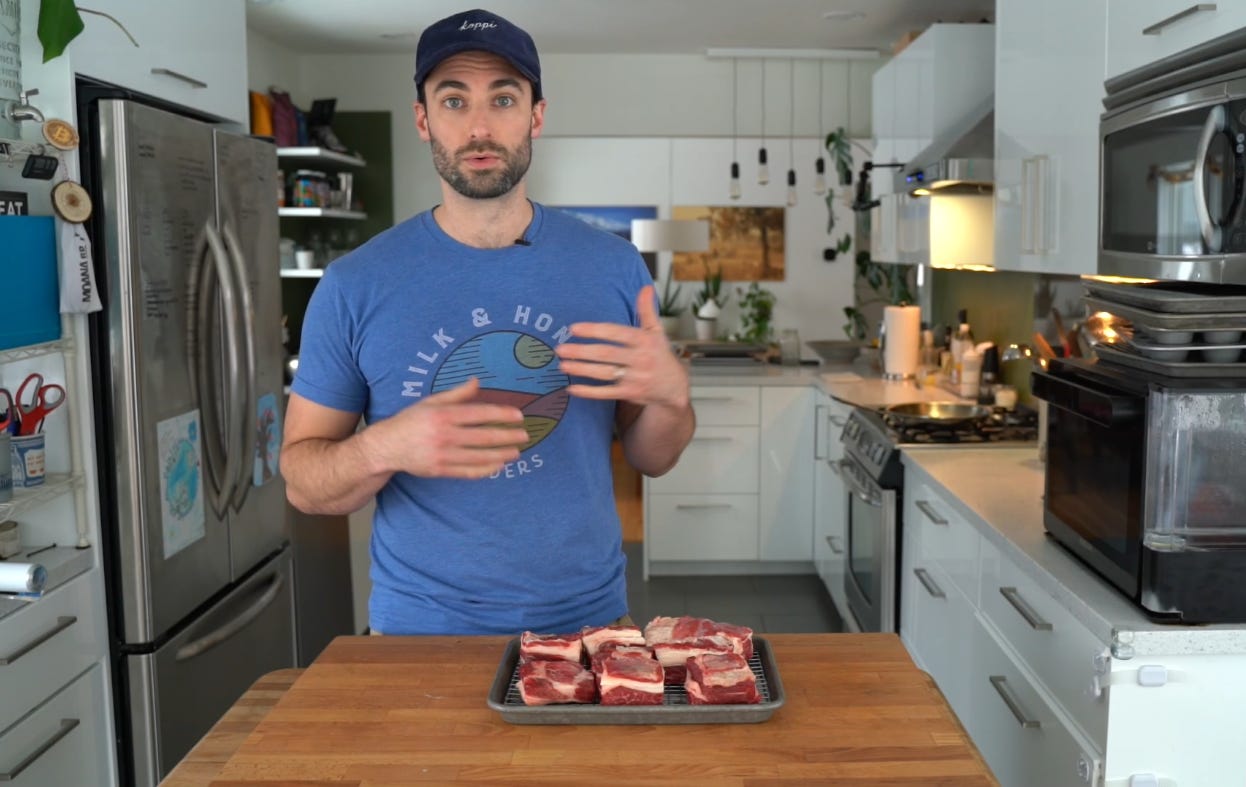Bone Stock: Elixir of Life
Extracting maximum value and nutrition from your bulk purchase
When buying beef in bulk, you will hopefully have requested to have as much of the yield as possible (refer back to the article “Working with the Butcher” for more on that topic). We also already talked about how to convert all of that beef fat by “Rendering Tallow”, the next important task is learning how to make the most of your stock bones.
The stock you can purchase at a grocery store will largely fall into two categories: inferior product made from the trimmings off of feedlot beef, or egregiously expensive. While the bones themselves are not edible (despite best attempts by my kids), there are a ton of nutrients that will be wasted unless those bones spend some time bathing in some hot water. When done right, stock is chocked full of minerals, protein, branched-chain amino acids.1 And when buying your beef share in bulk you pay by hanging weight which includes all of the bones, so you can consider it as free byproduct.
Breaking down the process
Step 1: Soak and rinse your bones before turning on the heat
Your stock parts will likely still have some residual blood in them, which if left in the stock will add an undesirable bitter flavor. Soak the bones in cold water for 30-45 minutes, then drain and add fresh water.


Step 2: Add water and salt, then gradually bring to a boil
Keep count as you add quarts of water until you have covered the bones completely in water. For every quart of water, add 1-2 grams of salt.
Extraction will be optimal between 185-195F. Going above 200F is where the proteins will start to denature and the remaining coagulated blood and impurities will dissolve into the liquid and not be easily strained out.
Step 3: Keep in that temperature range for 4-6 hours
Simmering your bone stock for 12-24 hours is not necessary to achieve a fantastic extraction. In fact, studies have show that simmering beyond 4-6 hours can lead to a substantial increase in the histamine levels in your stock.2
Step 4: Strain (and optionally reduce)
Use a pair of tongs to pull out the large bones first before attempting to pour the liquid off into another metal or glass vessel with a fine mesh strainer.3 Try to pour slowly such that the refuse that accumulates at the bottom of the pot.
At this point you can transfer the strained liquid into storage containers and freeze. However, I will often rinse out the pot and return the stock, bringing it back to a simmer to reduce for another 1-2 hours, resulting in less space taken up in the freezer.
The process is a bit time consuming, but by doing large batches at a time you will end up with a bounty of stock in your freezer, ready for your next meal.
The Purpose of the Primal Cut Sheet
This is part of an ongoing series that aims to provide you with all of the information you will need to start buying high-quality beef in bulk directly from a local producer.
If you’re looking to buy in bulk right away and would like some personalized assistance, I also offer 1:1 consultations to help you navigate cut sheets or answer any other questions you might have:
By being a paid subscriber, you help support my efforts to bring most of this content to the public free of charge and free of advertisements. Thank you.
BCAAs are important for muscle protein synthesis, which is the process of building new muscle tissue. They also help to prevent muscle breakdown during exercise.
"Effect of Different Cooking Methods on Histamine Levels in Selected Foods" by J. Yamaguchi, C. Kimura, S. Ohshima, T. Suzuki, and K. Wada (2011). https://www.ncbi.nlm.nih.gov/pmc/articles/PMC5705351/
Avoid using plastic vessels when your food or liquid are still hot. The threshold temperature where the plastic starts leaching into your food can vary, but I use 140F as a general rule of thumb.







